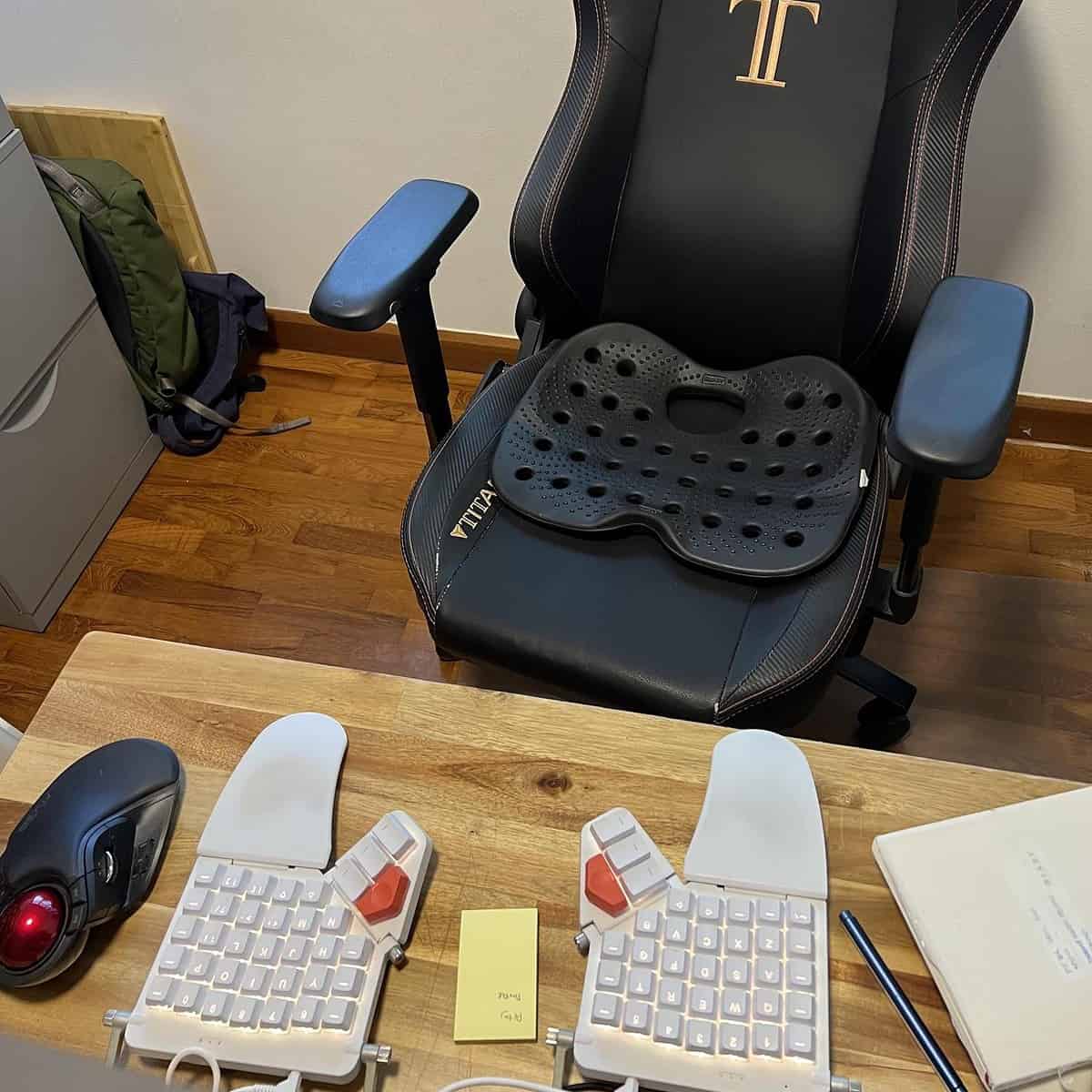Who are your Extreme Users & Niche Experts, and what are they doing?
As I write this, I am using an Omnidesk standing desk and a SecretLab chair.
Both are Singaporean companies, and are creations for gamers.
I bought both pieces of furniture in 2020, when we started working from home due to the pandemic.
 My workspace, including my desk & chair
My workspace, including my desk & chair
Back then, a friend had asked me why I bought these “because these look so ugly!”
(My wife agrees, btw!)
My reasoning was this:
- working from home entail sitting on my ass for many hours
- since we are going to be seated for long hours, why not follow those who already sit for long hours, & have already figured out what is comfortable & not comfortable?
- Gamers sit for many hours, and they seem to be choosing these chairs & tables.
Hence, I chose the SecretLab chair and the Omnidesk standing table for my work-from-home setup.
The same logic actually applies to many aspects of work & life: if you want to do X, find out who are the extreme users in domain X, and see what the extreme user does or chooses.
This logic is especially pertinent in design research. Design research often feels like trawling through the four seas in search for a tiny shiny golden needle. I think the needles lie with the extreme users & niche experts of the domain.
In a recent conversation, I was advising a design team that is exploring the world of impact investing, i.e. impact investment funds which invest in ESG enterprises.
And my advice was to look for the extreme users: which social enterprises are NOT taking any investment funding, and how are they doing so? The other extreme would be to look for social enterprises which are surviving ONLY on investment funding, and see how they are doing so.
You often get the clearest signals & also the best strategies & workarounds from the extremes. The muddling middle frequently won’t yield the same insights. The average definitely doesn’t yield the same clues.
The same logic also applies to looking for niche experts. Experts in niches which have much more extreme conditions are much more likely to be useful in sharing techniques that are broadly applicable in less extreme domains.
If you want to learn how to negotiate, would you rather learn from a business negotiator, or a hostage negotiator? I think the latter would have much more experience with edge-cases, especially since you can’t say “let’s split (the hostage) in half”!
Similarly, if you want to learn how to develop empathy & build rapport, would you prefer learning from a corporate salesperson or from a social worker? I think the latter would have much, much more experience with a broader range of people across different motivations, and would have more to learn from! (Incidentally, Chris Voss, a former FBI hostage negotiator, got into hostage negotiation by volunteering at a suicide hotline, where he learnt the basics of the empathy-based hostage negotiation techniques he later used in the FBI)
If you want to learn how to survive with little water, investigate how people living in deserts live & conserve water. Or even better, how animals like camels have evolved to do so
If you want to learn how to survive in the cold, learn how people in the Arctic regions keep warm. Or how animals like otters, which primarily live in cold water (which conducts cold much more easily than air!) have evolved to stay warm.
If you want to learn multi-tasking strategies, follow a young working mother who also has to take care of her elderly parents & parents-in-law.
You get the idea.
So the next time that you’re wondering about your design research project, and wondering who you should interview, start by asking “who is the extreme user and niche expert?” and start to learn from them!
Interested to work with PJ? See his offerings & schedule a chat here: https://dharmadigitaldesigns.com/
Want to read more from PJ? See his blog posts here: https://inquivision.com/posts/